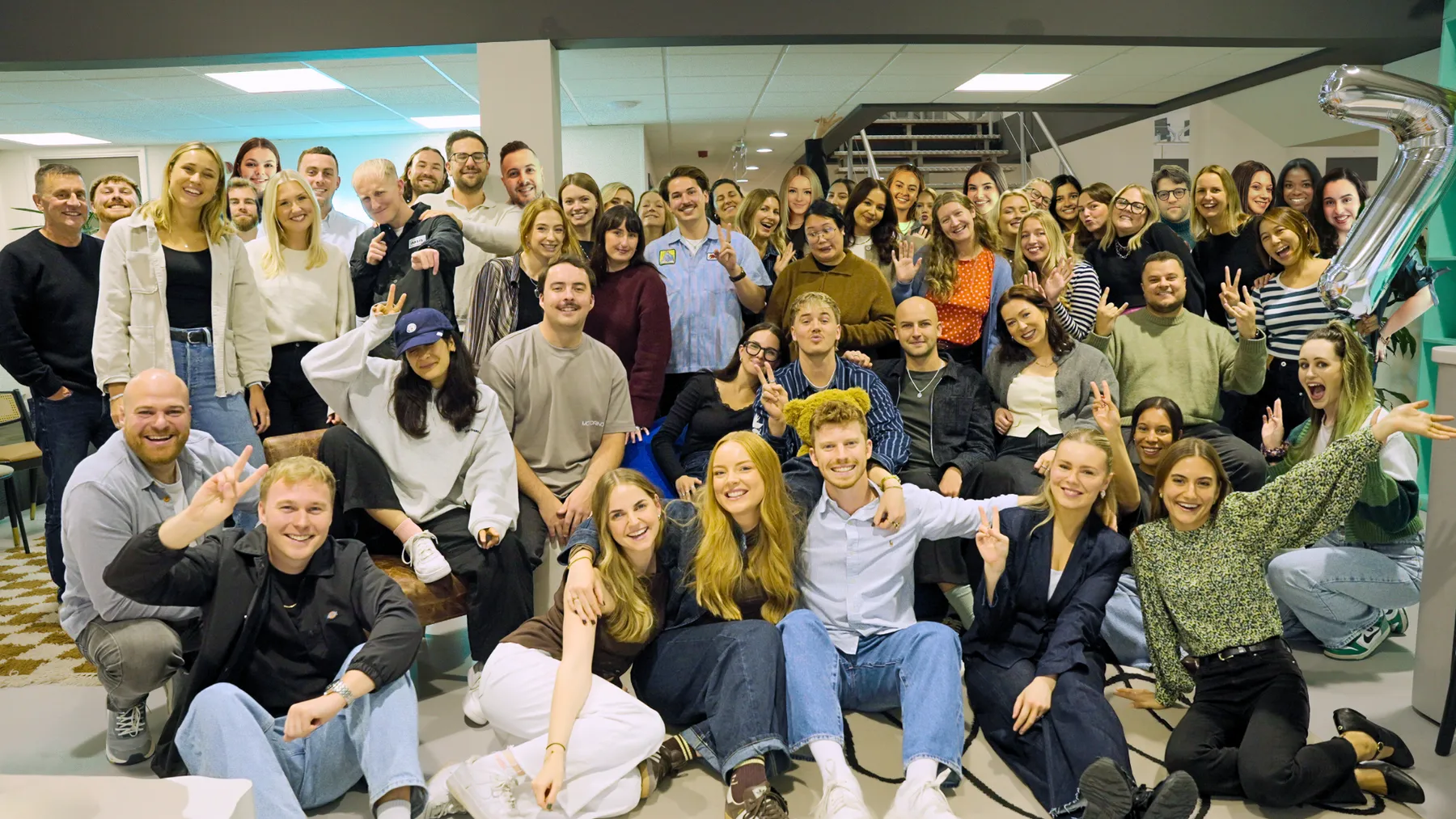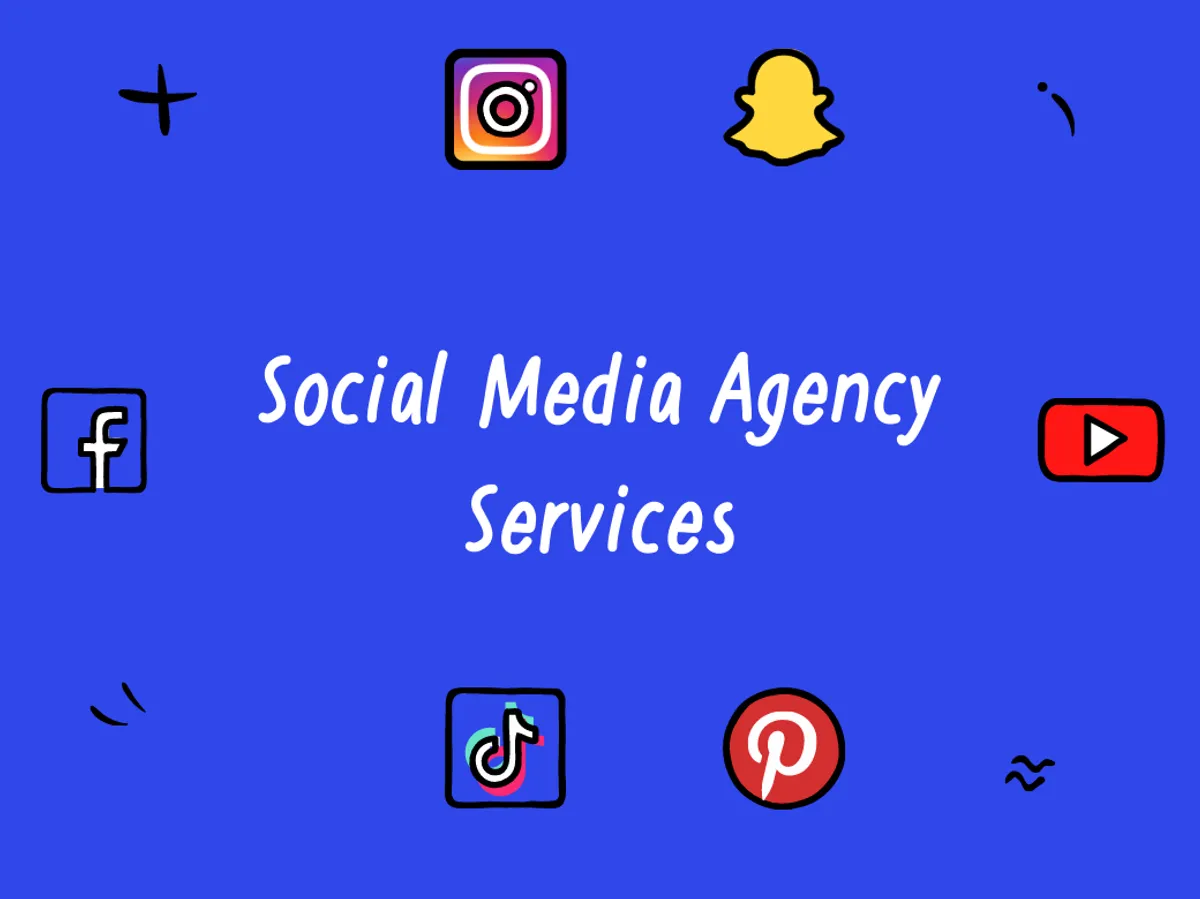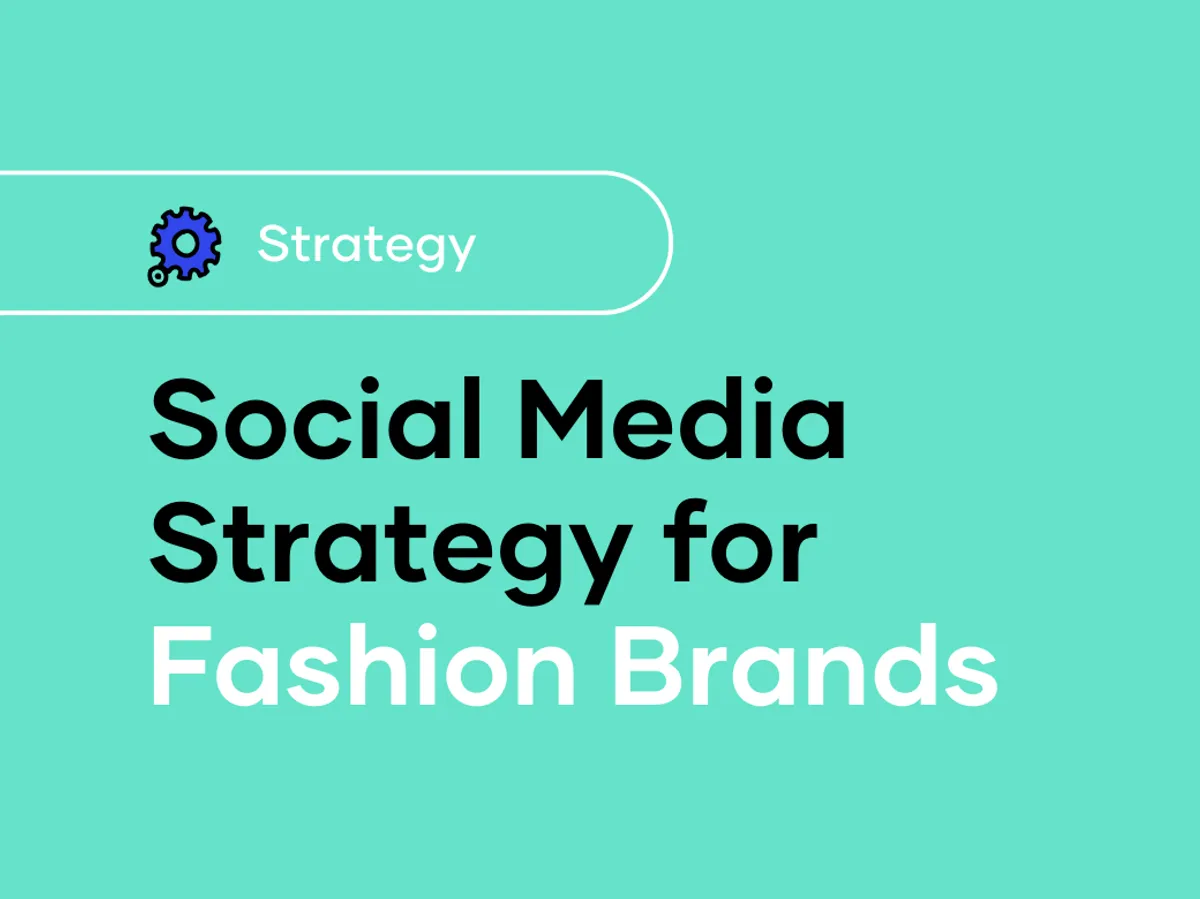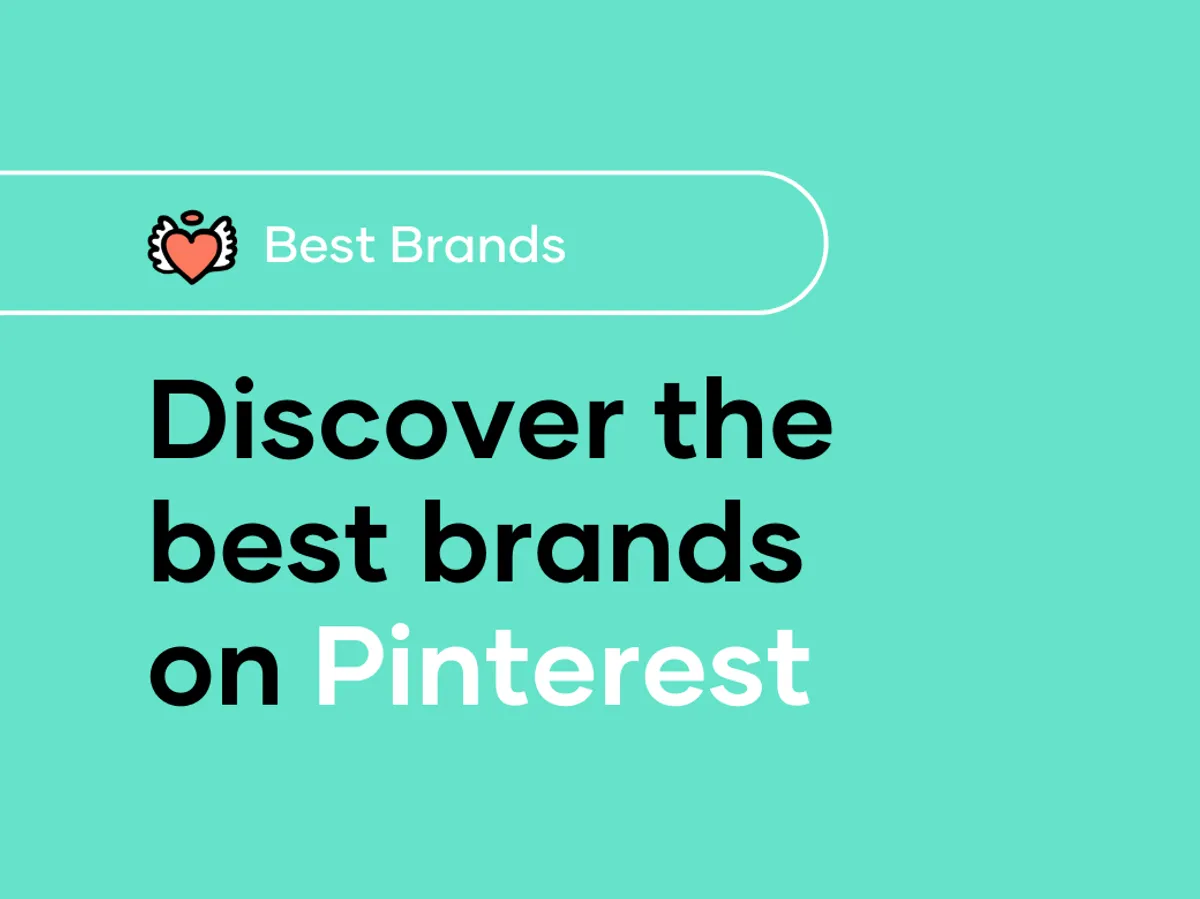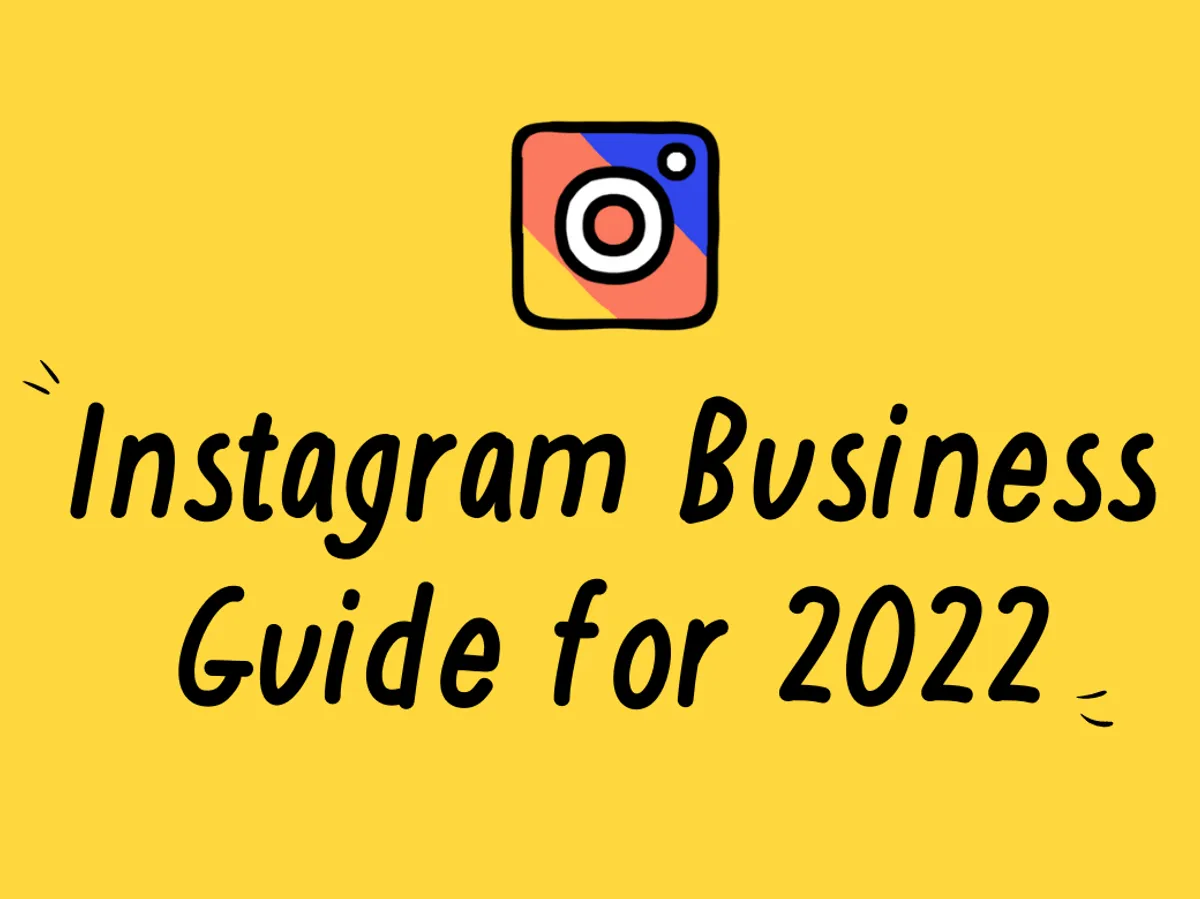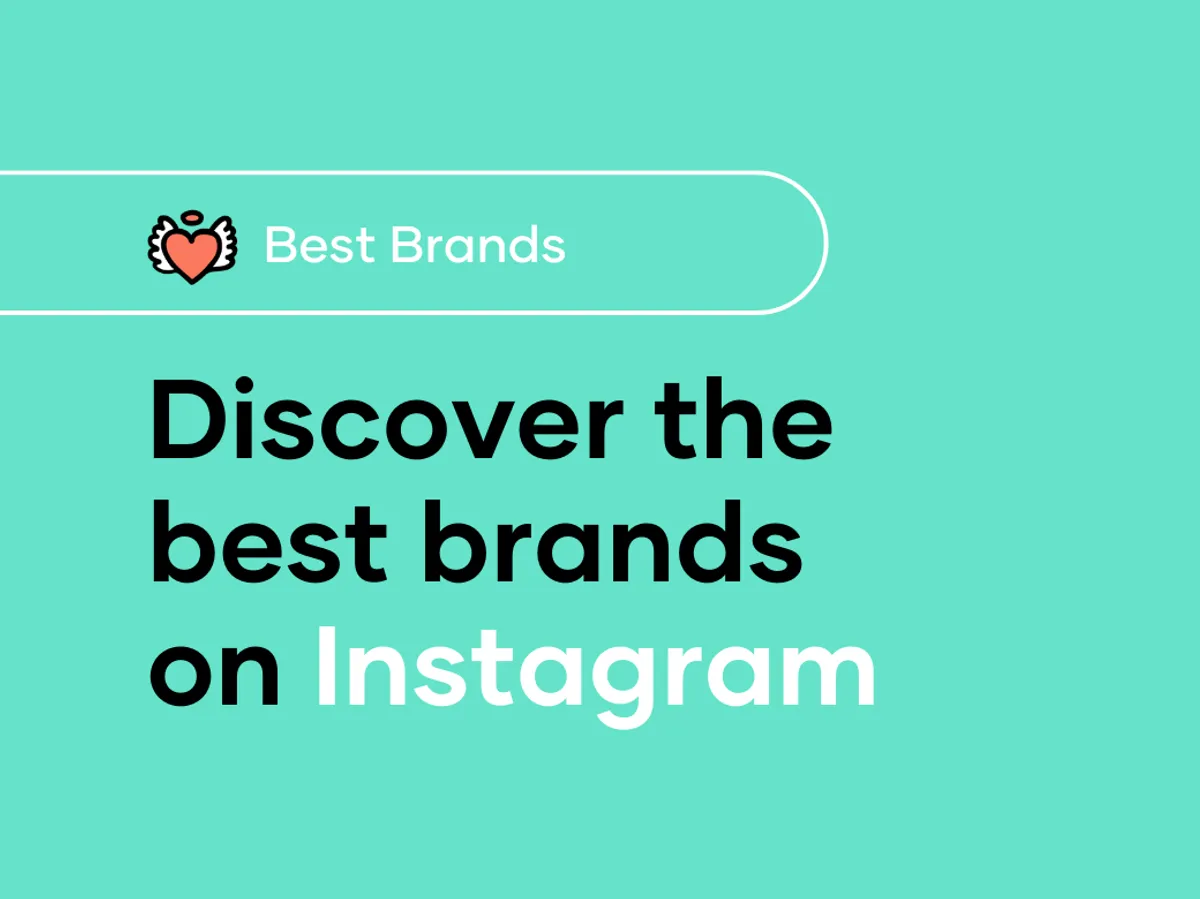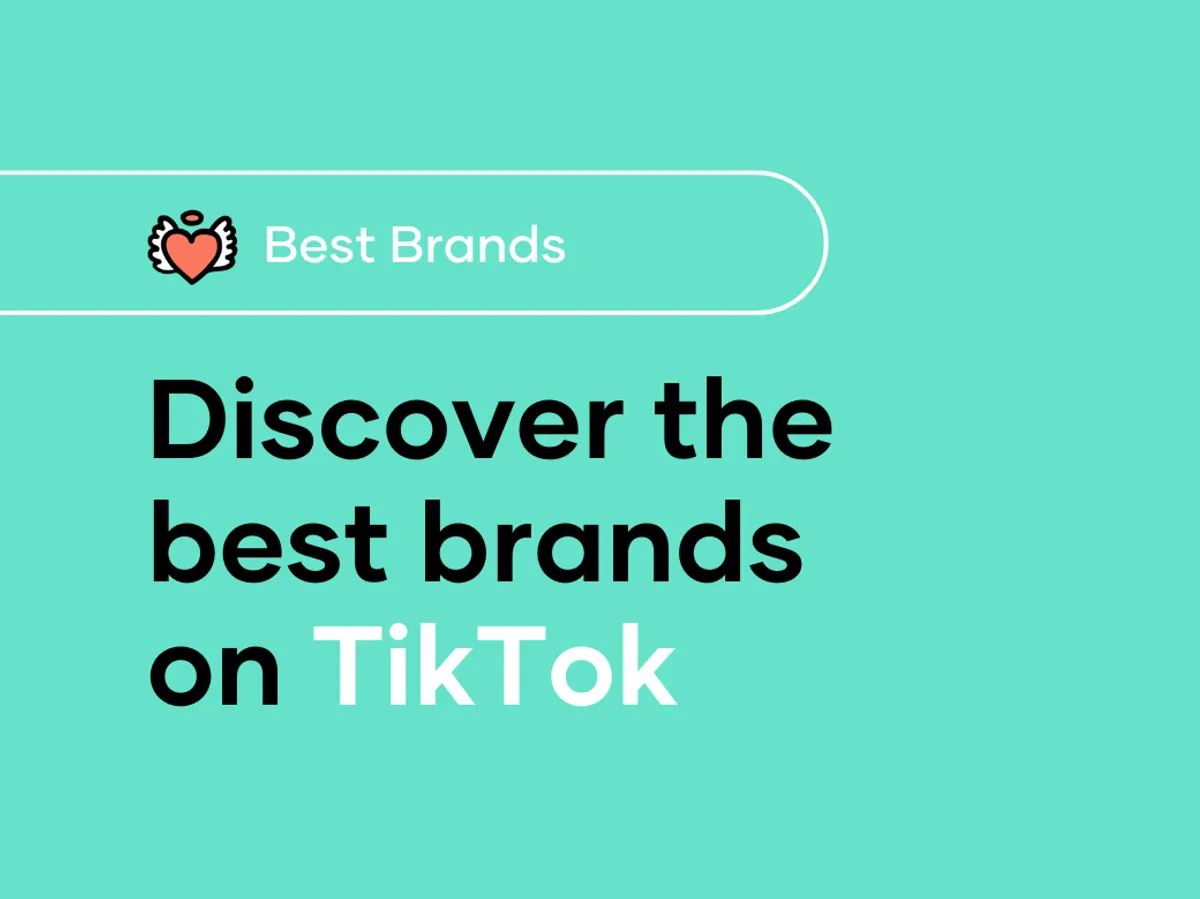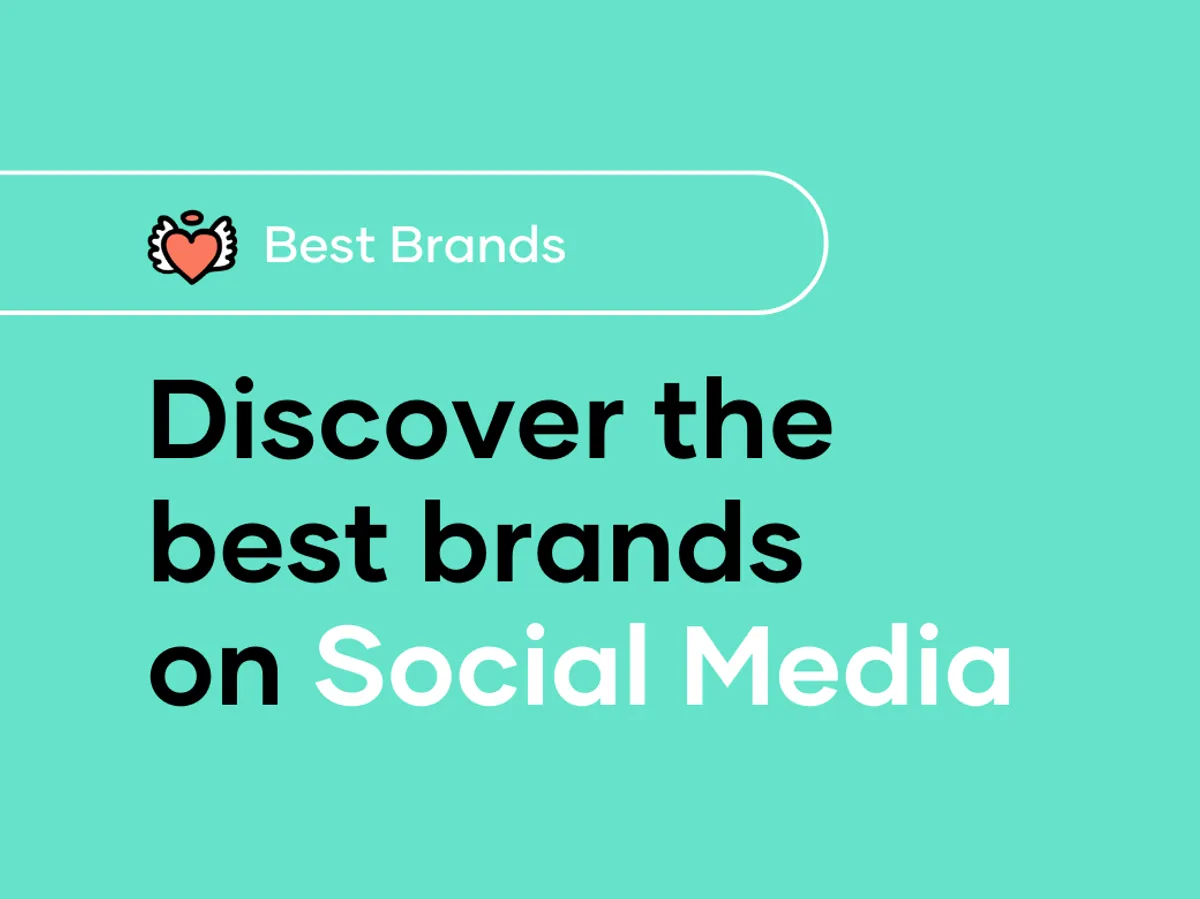Social Media Strategy For Luxury Brands: The Ultimate Guide (Insights, Examples & More)

Contents
“Does social media work for luxury brands?”
In our experience, yes.
In fact, we’re expecting nearly a third of global luxury sales to take place online by 2025.
And with millennials twice as likely to say, “when a brand uses social media, I like that brand more”, it’s becoming almost impossible for luxury brands to resist the pull of social media.
In this blog post, we’ll show you why social media works for luxury brands and how you can navigate through the platforms for the best results.
We help luxury brands and direct-to-consumer products drive more revenue and increase their profitability by using social media marketing.
For example, we recently helped a luxury homeware brand earn an 18.23X return on their ad spend.
To understand how to get similar results yourself, read on.
Stay up to date
Recommended Social Media Platforms for Luxury Brands
Social media marketing for luxury brands is different to marketing your average brand for one main reason: Luxury brands are different to everyday products. They exude exclusivity, craftsmanship, heritage and the higher prices signal superior quality.
So, any social media marketing strategy for a luxury brand must revolve around creating an exclusive lifestyle. As Deloitte writes, “the focus of luxury marketing may be less on selling items and more on creating a value-added customer experience based on brand storytelling.”
With social media marketing for luxury brands, you must pay special attention to creating content that’s entertaining, current and stimulates engagement.
To do this yourself, use the 4 pillar strategy to create a balanced mix of content that educates, inspires, promotes & entertains.
85% of luxury consumers use social media, each using an average of three platforms. So, which platforms should you use?
Instagram is perfect for sharing user-generated content and working with influencers and experts, as many luxury brands have done throughout the pandemic with original and relatable features. You can also post this content across other social channels with ease.
Posting stories and Instagram Reels is also highly effective for grabbing attention and showcasing the lifestyle your brand offers. Kenzo, for example, share both lifestyle imagery and promote causes dear to them, like tiger conservation with the WWF.
Facebook is still the biggest social media platform and cannot be ignored. Their segmentation powers are unrivalled, allowing you to find precisely the right person to market to. Perfect for targeting the ultra-specific groups that luxury brands desire.
As Facebook owns Instagram, sharing your images and videos is very easy. With an effective and well-thought-out Facebook ads campaign, you can make a great return on your ad spend for a relatively small cost.
Youtube
YouTube is one of the most prominent platforms, and it’s perfect for sharing longer video content. Working with influencers or an in-house video team, you can either create organic content for your channel or scrap your channel entirely and produce content entirely through influencer channels.
For example, you could work with influencers to mention your brand in your shopping hauls or simply wear an outfit or showcase a luxury service in a video as a form of product placement.
YouTube’s ad platform is perfect for showing your ads to specific target markets, such as advertising luxury Italian food and wines to a user who’s been watching many Italian travel videos.
Pinterest is a content-rich platform offering both paid and organic ways to share content. With 59% of millennials having discovered a product through Pinterest (level with Instagram), it’s a platform that luxury brands can’t ignore.
As a visual discovery platform, many users use Pinterest to find new products and plan future events. Users are very likely to save images of products they plan to buy, for example, organising an outfit for an event entirely through a Pinterest board. And many users do purchase these products, as Pinterest drives more traffic to shopping sites than any other platform.
Above all, using Pinterest makes users feel good, which is precisely what luxury brand marketing aims to do. So the more Pinterest’s affluent audience creates boards with your products, the better.
Examples of Luxury Brands on Social Media
Research has shown that 13 factors influence a customer’s interaction with a luxury brand on social media, from aesthetic motives to status signalling. Above all, luxury products signal superior quality. As such, luxury brand’s require superior social media content.
It’s essential to pay attention to the quality of the content posted, not letting anything less than stellar be sent out. A luxury brand’s image is important, and it can’t let weak content tarnish it. From Tiffany & Co’s “Believe in Dreams” campaign to Christian Louboutin’s “#WishUponAStar”, content should seek to stimulate fantasies of a higher social status and better life.
It’s a tall ask. But many brands are doing just so. By bridging the gap between brand and customer, they’re creating content that allows a customer to fantasise how brand ownership would alter their sense of being.
Here’s a selection of our favourite examples of luxury social media content.
Video examples
Most luxury advertising isn’t to convert. It’s about showcasing a lifestyle, or the feelings associated with it, hence the more artistic video adverts for high-end colognes or cars. And there isn’t a better medium to do so than video.
Rolex, for example, uses YouTube to share videos with a high production value that amplify the luxury lifestyle they offer. Alongside sharing general how-to videos that Rolex owners will find helpful.
[Link to watch]
Live from the Maldives, this video captures the essence of staying at the St. Regis Vommuli Resort. From the architecture to the pool to the beachfront view, it has it all. And it manages to show you all of this without a word and in only 13 seconds. The almost effortless aesthetic is half of the appeal.

Social proof is a huge factor in luxury advertising. Big brands like Gucci use it through celebrity endorsements. Smaller brands, like 001 London (which is one of our clients), can leverage social proof in other ways. Like they do here through both reviews and showcasing awards.
Image examples
With an image alone, you can showcase feelings of luxury through composition, colour palette, quality of photography and, of course, the subject matter and scenery. And there’s no better place to showcase these images than Instagram.
If you’re living a luxury lifestyle, you drink Veuve whenever you please, like at lunchtime. Here, the bottle isn’t the focus of the image. The food on the table and the story it tells is. Just a picture of the bottle alone wouldn’t showcase these feelings of luxury. Not to mention, the description itself helps paint the picture further by evoking the sensations related to the display.
Bold colours and composition separate this ad from the rest - it isn’t your typical model snapshot. And for these reasons, it stands out.
Here, Creed shows that their cologne isn’t just a product, it’s a concept, a lifestyle and a story all rolled into one. You’re not just going to smell nice; you’re getting the best of Norway too.
Carousel Examples
Carousels can show both the emotionally rich and evocative imagery alongside the more practical imagery of seeing the product up close.
For example, Tiffany & Co share an artistic and lifestyle focused video ad showcasing the entire collection next to individual photos of each product in the collection. It’s a great way to bridge the emotional reaction to an ad directly to a purchase.
Below, Selfridges use a carousel to display a themed collection of products. Here, they show a range of beauty products under their “alfresco adventures’ theme. They use a mixture of pictures from magazine-style advert spreads to product shots.
Carousels also work as a way to show products in action in many different ways. Here, Corston Architectural Detail (another one of our clients) showcases their collection of brass products as they’d look in a modern interior.
Facebook Ad Strategies For Luxury Brands
Before Covid-19, 90% of luxury sales were through physical stores. With most physical locations forced to close, these brands have had to lean more into digital marketing—notably Facebook.
However, exclusivity is fundamental to luxury brand marketing. For example, If anybody could walk into a high street store and buy a Louis Vuitton handbag, then they’d lose their appeal. So, a mass campaign wouldn’t work. In fact, going viral could even hurt the brand.
So to create this exclusivity online, brands can use private member groups, concierge services or digitally-delivered loyalty perks and programs specifically reserved for previous customers.
We implement Facebook ad strategies for our clients daily, and we’ve found that it’s best to do things a little differently for luxury brands. For starters, it involves targeting a particular group of people.
Facebook Ad Targeting Options For Luxury Brands
Facebook ads are one of the most effective forms of online advertising, largely thanks to its highly sophisticated level of segmentation and targeting. For example, you could target married women over 40 in Milan who like Prada and Versace. You can take it further and target people by school, where they work, their job title and much more.
Targeting is vital for a luxury brand marketing strategy. Marketing to everybody can damage the brand and potentially create undesired associations with it.
We recommend splitting your Facebook Ad Sets into different pockets of audiences and levels of intent that people have shown towards luxury products.
Luxury interests
It’s key to remember that luxury products aren’t vital. They fall under wants rather than needs. People buy these products to treat themselves, not necessarily out of necessity.
Because of this, the more somebody views luxury goods or interests around a luxury lifestyle, e.g. yachting, the more likely they are to buy luxury products.
Luxury brands
You can target customers by the brands they’re interested in. This is perfect for attracting customers interested in brands with a similar price point and style to yours.
For example, users interested in Gucci are very likely to be interested in Dior.
This strategy works exceptionally well for drink and cosmetics brands. Let’s say you’re advertising a high-quality gin. You can target customers that have shown interest in similar gin brands or other drinks like vodka or tequila. Because if they’re interested in those other drinks brands, they’re very likely to be willing to give yours a try as a similar level of quality is assumed.
Income-based
This method only applies to US-based audiences. Using this, you can target customers by household income. This is perfect if you have research that shows the income brackets of your most loyal and highest-spending customers.
With this method, you can search by which percentage of income they are, e.g. the top 10% of highest earners.
Lookalikes
A lookalike audience is a new audience that’s very similar to your existing customers. Facebook creates these by taking insight from your current audience and targeting new audiences who are likely to become customers.
We recommend starting with 1% of lookalike audiences when starting your campaign. Then once you’ve seen success with a lookalike that size, build another ad set with 1-2% and so until the performance isn’t high enough to be worth scaling further.
Broad Audiences
A broad audience is an audience with no interests or custom audiences built into the ad set. This lets you use Facebook’s machine learning to search for customers in-market for the products you sell.
One of our broad audiences (18-65+ male and female) has worked extremely well, as you can see here:
For the top of the funnel (TOFU) campaign, we got a 6.37 return on ad spend (ROAS).
Then, we blew it out of the water with a 24.17 ROAS on our ‘all of funnel’ (AOFU) campaign.
The only thing to include in your AOFU / Broad Audience ad set is to exclude 30-day website visitors.
How to Structure Your Luxury Brands Facebook Ad Campaign
To start, imagine your whole campaign as a funnel.
At the top are prospects who know little about your brand, in the middle, those who engage with your content and at the bottom are those most likely to buy. The lower the intent behind a search, the higher in the funnel they’ll be and vice versa.
For a campaign to work, you must show appropriate content for each stage of the funnel and the level of intent the prospect has shown.
I.e. Brand awareness style content at the top and content that pushes a sale and/or links to sales pages closer to the bottom of the funnel.
Here’s how a funnel typically looks.
On the left is the stage of the funnel, and on the right is who would be in that stage of the funnel.
Stage of funnel | Identifier |
All of funnel | Broad Audience |
Top of funnel | Lookalikes Interest audiences |
Middle of Funnel | Custom audiences Social engagers Video viewers All website visitors |
Bottom of funnel | Product page visitors Dynamic carousel users |
To show content that suits the prospect’s level of intent, include exclusions at each stage of the funnel. Here are the exclusions to include:
Stage of funnel | Exclusions |
All of funnel | Website Visitors: 30 days |
Top of funnel | Website Visitors: 30 days |
Middle of Funnel | Add To Cart: 30 days |
Bottom of funnel | Purchasers: 30 Days |
How frequent to advertise to each stage
Luxury brands have a higher average order value. They tend not to be a spur of the moment impulse purchase like other products. As such, you need more touch points overall with the prospect.
As such, here are the frequencies we recommend:
Stage of funnel | Frequency per month |
Top of Funnel | 2 to 3 |
Middle of Funnel | 5 tot 6 |
Bottom of Funnel | 8 to 10 |
Once you’ve reached a place where you feel like you’re peaking out on how much you’re able to spend on conversion campaigns, we recommend adding in some TOFU brand awareness content. From this, you can fill up the MOFU with video views and engagement campaigns, expanding your marketing and building your brand in the long term.
By doing this, you can also scale across the other core social media platforms in your campaign.
Recommended Monthly Ad Budget For Luxury Brands
There are four key points to take into consideration when setting up your ad budget.
- How much does your product/service costs?
- Your average order value.
- How many customers do you want to acquire?
- Your profit margins per product.
For example, let’s say your product is worth £1000 and your profit margin is £500 per sale. You’d want to be starting with at least £500 per day in Facebook ad spend.
Typically, you’d want to be spending at least 1x the margin you’d make from one sale. Otherwise, your budget may be too small, and it’ll take too long to get any valuable insight from your campaigns.
By spending too little, you’ll also suffer too much volatility in your campaigns. Perhaps going days without a single sale and not gaining enough data to see what’s going wrong or optimise those campaigns.
Facebook itself recommend spending enough to see 50 purchases per ad set. This will help you quickly get out of the learning phase and reduce volatility.
Getting The Best Results For Your Luxury Brand with Social Media
To get the best results with social media marketing, you need a team of experts behind the wheel. A team that’s been through the trenches and understand what works and, more importantly, why it works.
Because with social media marketing, especially for luxury brands, there’s no guessing. You’ve got to know what you’re doing. Otherwise, you could get stuck throwing money on something that doesn’t work, and neither knowing why it’s not working nor how to fix it.
Using our FB advertising expertise, we helped a jewellery brand earn a 2500% increase in their average monthly orders. We did this by creating a paid social strategy based on our full-funnel approach. Using their existing creative assets and resources, we consulted them on creating highly converting video creatives to use on Facebook and Instagram. This netted them a 4.3 ROAS.
Another example is our work with a subscription box service that shares international snacks with its customers. The brand hadn’t worked with Facebook before, so we built them a funnel, created and edited content and then split tested the ad copy. This drove over 10,000 new subscribers and achieved a ROAS of 3.24, smashing their goal of 2.5 and allowing them to sustainably grow their business.
It’s results like those that helped us become a Preferred Facebook Marketing Partner Agency. We’re focused on results, and we’ve achieved similar results to the above for many luxury brands.
We do this by combining our in-house team of paid media and creative professionals to create campaigns that attract, connect and convert.
Or alternatively, you can check out our post on the best social media agencies in the UK to find an agency suitable for you.

You might also like
Don’t be sheepish
let’s talk
